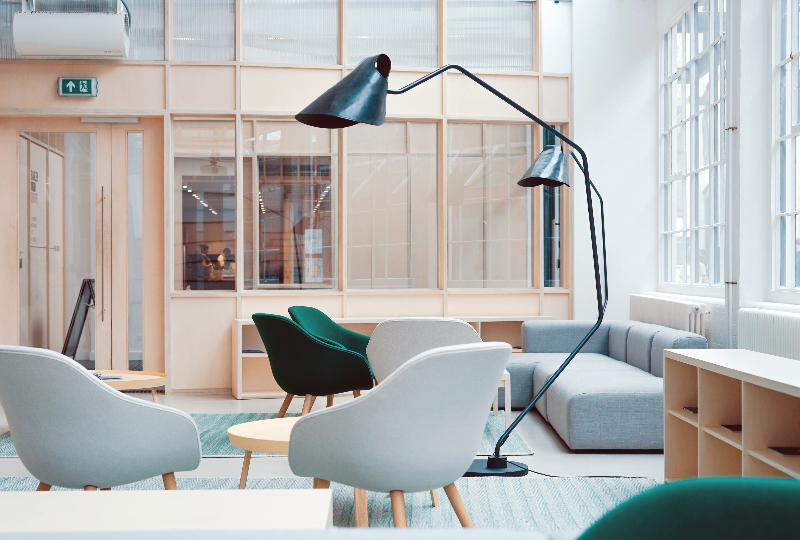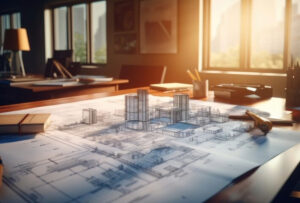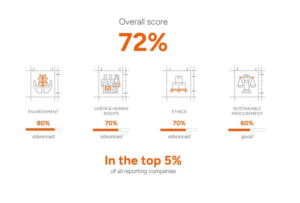The Evolution of the Workplace: From the 1950s to Modern Day Introduction
The workplace has undergone a remarkable transformation over the past seven decades, reflecting changes in technology, culture, and the way we work.
From the rigid structures of the 1950s to the flexible, hybrid work environments of today, in this blog I will explore how the workplace has evolved, touching on key concepts like hybrid working, office fit-outs, and moving services.
Written by Jacqueline Bird

Head of Move & Change Management
Jackie is Head of Move & Change Management for Crown Workspace and has over 25’ years management experience within Workplace Consultancy, Change Management and Move Management.

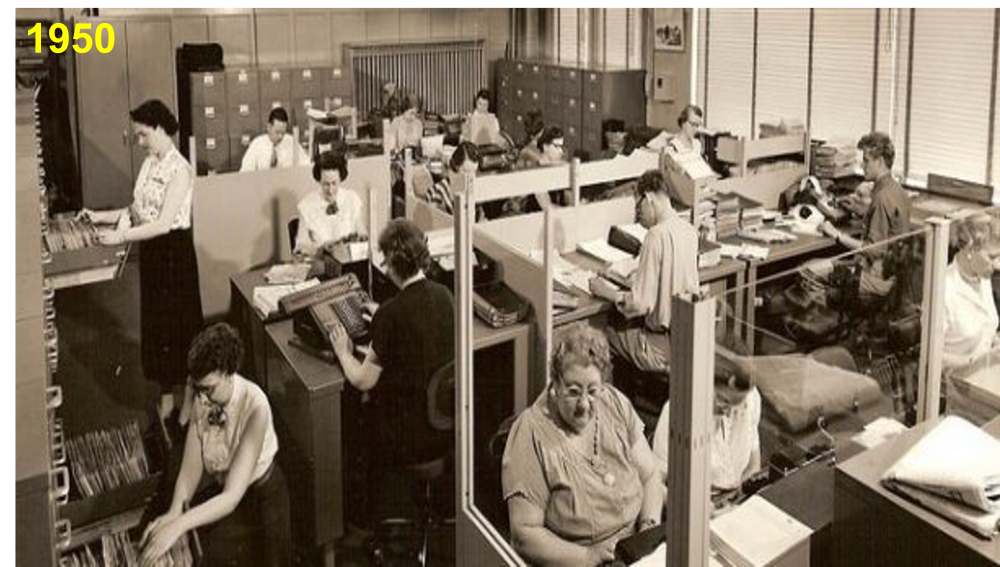
1950’s: The Traditional Office
The 1950s marked the era of the traditional office. Cubicles and corner offices were rare, as most employees worked in open-plan spaces. Employees typically adhered to a strict 9-to-5 schedule and were expected to be physically present at the office.
The workplace felt formal, hierarchical, and paper-dominated, with offices tending to be cramped and manual processes taking up a large part of the time spent.

1960’s: The Rise of Cubicles
The 1960s brought the advent of cubicles, designed to provide more privacy and partitioned workspaces. Office design became more structured and more spacious, but the atmosphere remained formal. Telecommuting was virtually non-existent, with the postal service, telex, manual typewriters, and the telephone being the main communication tools!
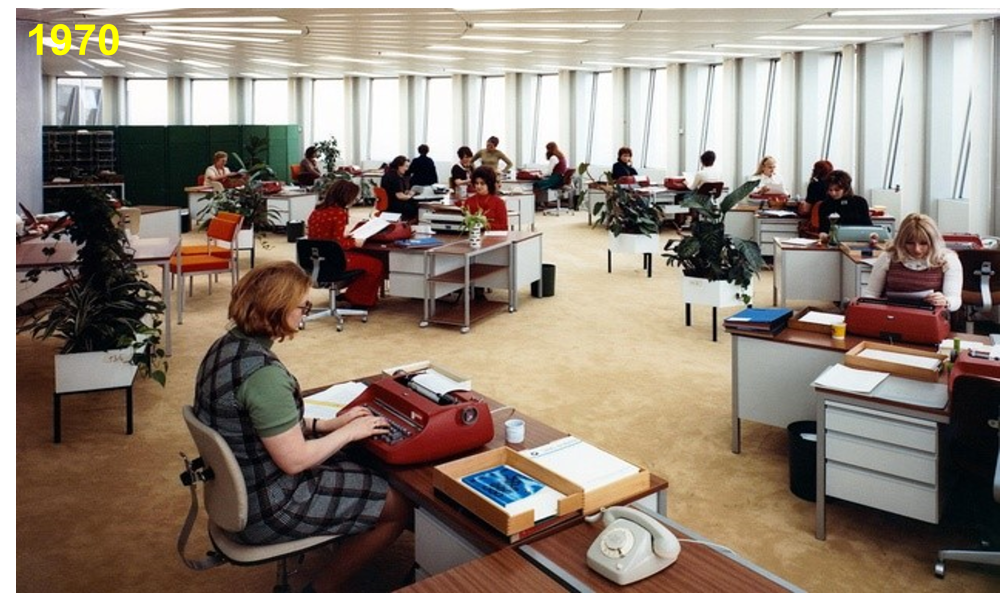
1970’s: The Birth of Flexibility
As the 1970s dawned, workplace culture began to shift. Employees started to embrace more casual attire, and the concept of flexitime gained traction. Cubicles persisted, but the workplace felt more relaxed and inclusive, with an increased focus on office design, as well as staff welfare. This decade also birthed the introduction of the electric typewriter!
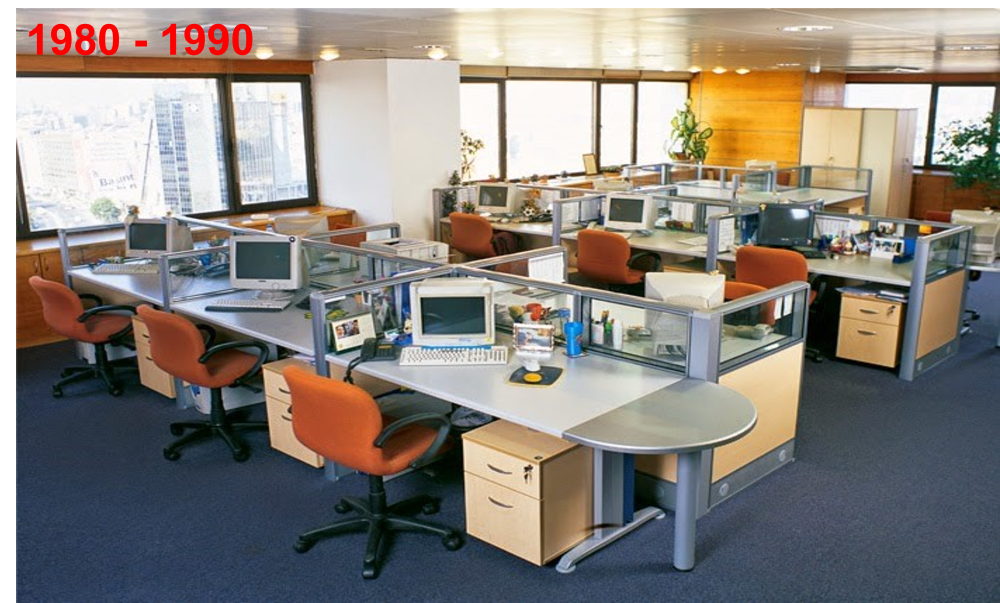
1980’s & 1990’s: The Age of Personal Computers & Office Design Innovation
The 1980s introduced personal computers, transforming the workplace dramatically. The cubicle became the symbol of office life, and office designs focused on accommodating these new machines. However, flexibility in work arrangements was still limited.
The 1990s saw a rise in innovative office designs, with open-plan spaces and collaboration zones. Technology continued to advance, but the office remained the primary place of work. Commuting was still the norm.
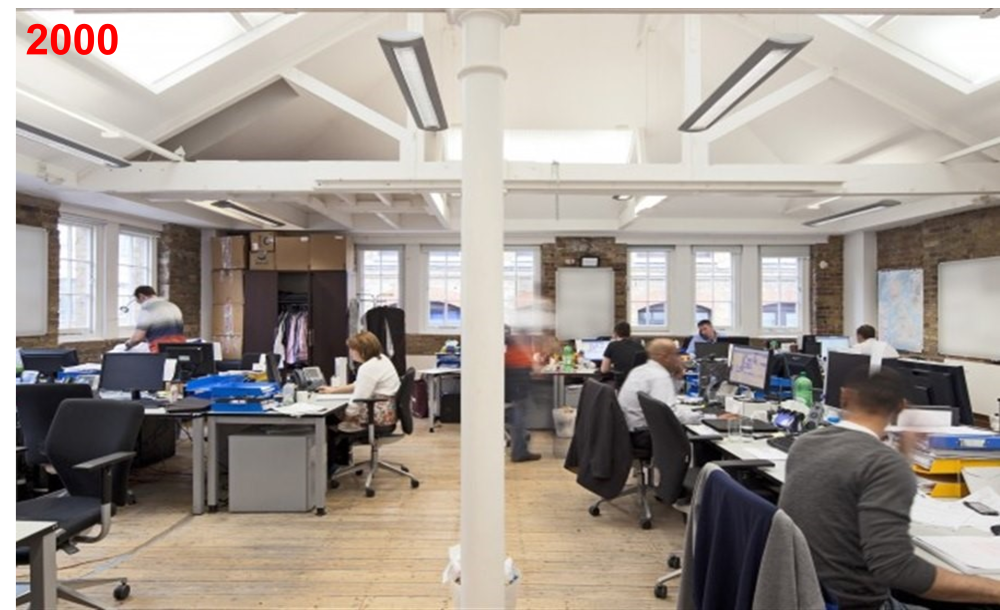
2000’s: The Digital Revolution
The 2000s witnessed the digital revolution. The rise of the internet, email, and smartphones enabled remote work, challenging traditional office structures. The term “telecommuting” gained popularity, and hybrid working began to emerge.
Working environments became lighter and airier with space being a lot more flexible. The office became very much an extension of your brand.

2010’s-Present: The Emergence of Hybrid Working & The Modern Workplace
The 2010s marked a significant shift towards hybrid working, where employees split their time between the office and remote locations. This change prompted companies to invest in office fit-outs that supported flexible work arrangements, with collaborative spaces, ergonomic furniture, and advanced technology.
The 2020s brought the modern workplace into sharp focus. The COVID-19 pandemic accelerated the adoption of remote work, making hybrid working a mainstream concept. We adapted to survive, and it has been the most seismic shift in commercial office space we have seen in the past 70 years. Office design ideas now prioritise flexibility, employee well-being, and technology integration.
Moving Services for a Changing Landscape
With the evolution of the workplace, many companies are re-evaluating their office locations and moving to better suit the needs of their hybrid workforce. Moving companies and services play a crucial role in facilitating these transitions, ensuring a seamless shift to new office spaces.
The workplace has come a long way since the 1950s, evolving from rigid, traditional settings to flexible, hybrid work environments. As we continue to adapt to changing times, the workplace will undoubtedly keep evolving, reflecting the dynamic nature of work itself.
This is where our Workplace Consultancy Team can really provide guidance and advise our clients on some of their workplace challenges. Get in touch with our friendly team today!
Related stories
In this blog, we delve into workplace consultancy, exploring the intricacies of workplace change and space utilisation strategies and their profound implications for businesses.
Sustainability remains a top business priority for Crown in the UK & Ireland and globally; we are therefore delighted to have launched our 2023 UKI Sustainability Report!
Crown are delighted to announce that we have been awarded Gold by EcoVadis in 2024 for the second time, reflecting our commitment to and progress in becoming a responsible business.
















